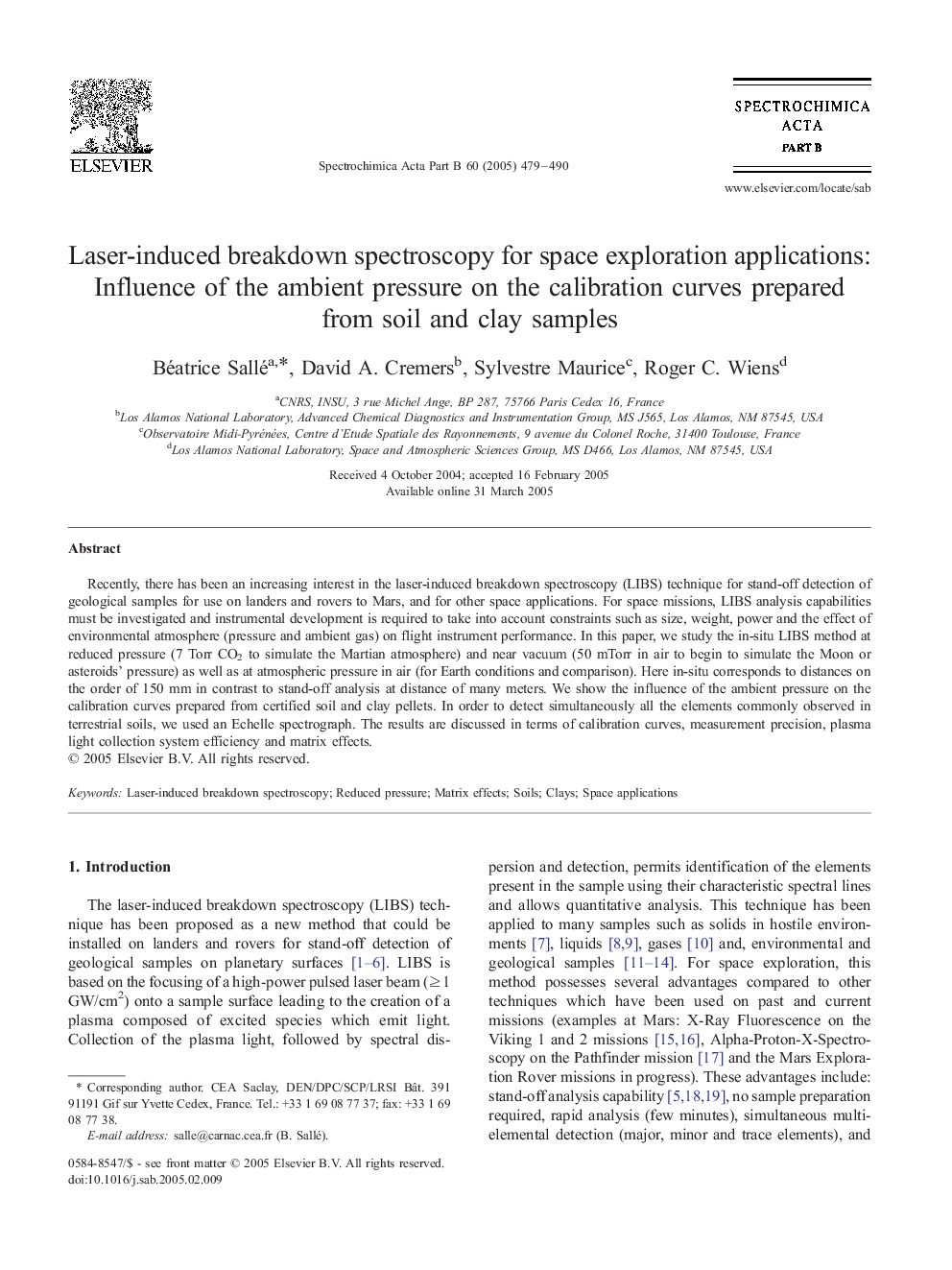| Article ID | Journal | Published Year | Pages | File Type |
|---|---|---|---|---|
| 10559040 | Spectrochimica Acta Part B: Atomic Spectroscopy | 2005 | 12 Pages |
Abstract
Recently, there has been an increasing interest in the laser-induced breakdown spectroscopy (LIBS) technique for stand-off detection of geological samples for use on landers and rovers to Mars, and for other space applications. For space missions, LIBS analysis capabilities must be investigated and instrumental development is required to take into account constraints such as size, weight, power and the effect of environmental atmosphere (pressure and ambient gas) on flight instrument performance. In this paper, we study the in-situ LIBS method at reduced pressure (7 Torr CO2 to simulate the Martian atmosphere) and near vacuum (50 mTorr in air to begin to simulate the Moon or asteroids' pressure) as well as at atmospheric pressure in air (for Earth conditions and comparison). Here in-situ corresponds to distances on the order of 150 mm in contrast to stand-off analysis at distance of many meters. We show the influence of the ambient pressure on the calibration curves prepared from certified soil and clay pellets. In order to detect simultaneously all the elements commonly observed in terrestrial soils, we used an Echelle spectrograph. The results are discussed in terms of calibration curves, measurement precision, plasma light collection system efficiency and matrix effects.
Keywords
Related Topics
Physical Sciences and Engineering
Chemistry
Analytical Chemistry
Authors
Béatrice Sallé, David A. Cremers, Sylvestre Maurice, Roger C. Wiens,
